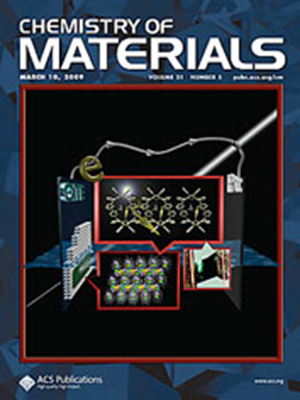将大型语言模型整合到化学与材料科学实验课程中
IF 7
2区 材料科学
Q2 CHEMISTRY, PHYSICAL
引用次数: 0
摘要
法学硕士课程如何影响学生在实验室环境中的学习,特别是在批判性思维、核心概念和科学身份方面?llm对课程交付策略(包括课程设计、框架和评估)的影响是什么?法学硕士能否促进将其他交付策略纳入本科课程,例如基于课程的本科研究经验(CUREs),从而潜在地扩大获得真实研究的机会?图1所示。使用chatgpt - 40演示完全由自然语言提示生成的数据可视化和分析。第一个例子强调了来自普通化学吸收光谱实验室的数据分析,其中要求学生(a)生成校准曲线,(b)使用比尔定律确定未知分析物的浓度。第二个例子说明了一个高年级物理化学实验室所熟悉的化学动力学实验。学生(c)收集并可视化随时间变化的吸光度数据,将测量的吸光度与分析物浓度与比尔定律联系起来,然后(d)将数据线性化以确定反应顺序、速率常数和综合速率定律。作者感谢美国国家科学基金会(National Science Foundation)的资助。dmr - 2333654。作者感谢受邀的研讨会演讲者:Allyson Fry-Petit、Bo Wu、Taylor Sparks、Boris Kiefer、Susan Gentry、Sam Cox、Mayk Caldas Ramos和Shruti Badhwar。作者也感谢所有研讨会参与者的出席。本文引用了其他31篇出版物。这篇文章尚未被其他出版物引用。本文章由计算机程序翻译,如有差异,请以英文原文为准。

Integrating Large Language Models into the Chemistry and Materials Science Laboratory Curricula
How might LLMs impact student learning in laboratory settings, especially regarding critical thinking, core concepts, and scientific identity? What are the ramifications of LLMs for course delivery strategies, including course design, scaffolding, and assessment? Can LLMs facilitate the incorporation of alternative delivery strategies into the undergraduate curriculum, such as course-based undergraduate research experiences (CUREs), to potentially broaden access to authentic research? Figure 1. Demonstration of data visualization and analysis generated entirely by natural language prompting using ChatGPT-4o. The first example highlights data analysis from a general chemistry absorption spectroscopy laboratory, in which students are asked to (a) generate a calibration curve and (b) determine the concentration of an unknown analyte using Beer’s law. The second example illustrates a chemical kinetics experiment familiar to upper division physical chemistry laboratories. Students (c) collect and visualize time-dependent absorbance data, relate the measured absorbance to analyte concentration with Beer’s law, and then (d) linearize the data to determine the reaction order, rate constant, and integrated rate law. The authors gratefully acknowledge support from the National Science Foundation under Grant No. DMR-2333654. The authors thank the invited workshop speakers: Allyson Fry-Petit, Bo Wu, Taylor Sparks, Boris Kiefer, Susan Gentry, Sam Cox, Mayk Caldas Ramos, and Shruti Badhwar. The authors also gratefully acknowledge all workshop participants for their attendance. This article references 31 other publications. This article has not yet been cited by other publications.
求助全文
通过发布文献求助,成功后即可免费获取论文全文。
去求助
来源期刊

Chemistry of Materials
工程技术-材料科学:综合
CiteScore
14.10
自引率
5.80%
发文量
929
审稿时长
1.5 months
期刊介绍:
The journal Chemistry of Materials focuses on publishing original research at the intersection of materials science and chemistry. The studies published in the journal involve chemistry as a prominent component and explore topics such as the design, synthesis, characterization, processing, understanding, and application of functional or potentially functional materials. The journal covers various areas of interest, including inorganic and organic solid-state chemistry, nanomaterials, biomaterials, thin films and polymers, and composite/hybrid materials. The journal particularly seeks papers that highlight the creation or development of innovative materials with novel optical, electrical, magnetic, catalytic, or mechanical properties. It is essential that manuscripts on these topics have a primary focus on the chemistry of materials and represent a significant advancement compared to prior research. Before external reviews are sought, submitted manuscripts undergo a review process by a minimum of two editors to ensure their appropriateness for the journal and the presence of sufficient evidence of a significant advance that will be of broad interest to the materials chemistry community.
 求助内容:
求助内容: 应助结果提醒方式:
应助结果提醒方式:


